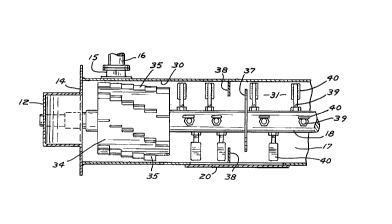Some of the information on this Web page has been provided by external sources. The Government of Canada is not responsible for the accuracy, reliability or currency of the information supplied by external sources. Users wishing to rely upon this information should consult directly with the source of the information. Content provided by external sources is not subject to official languages, privacy and accessibility requirements.
Any discrepancies in the text and image of the Claims and Abstract are due to differing posting times. Text of the Claims and Abstract are posted:
| (12) Patent Application: | (11) CA 2311241 |
|---|---|
| (54) English Title: | HOT AIR DRYER |
| (54) French Title: | SECHOIR A AIR CHAUD |
| Status: | Dead |
| (51) International Patent Classification (IPC): |
|
|---|---|
| (72) Inventors : |
|
| (73) Owners : |
|
| (71) Applicants : |
|
| (74) Agent: | |
| (74) Associate agent: | |
| (45) Issued: | |
| (22) Filed Date: | 2000-06-09 |
| (41) Open to Public Inspection: | 2000-12-28 |
| Availability of licence: | N/A |
| (25) Language of filing: | English |
| Patent Cooperation Treaty (PCT): | No |
|---|
| (30) Application Priority Data: | |||||||||
|---|---|---|---|---|---|---|---|---|---|
|
A hot air slurry dryer having a cylindrical housing with
a central shaft rotatably mounted in the housing. Material to
be dried moves from an upstream end of the housing to an outlet
at a downstream end. A hot air inlet is connected to the
upstream end of the housing preferably at an upstream end wall.
A material inlet is open to the side wall of the housing
downstream of the hot air inlet. The shaft carries means for
breaking up the moist material introduced into the housing and
mixing it with the hot air. In a preferred embodiment a drum is
carried by the shaft at the inlet end of the cylindrical
housing. The drum carries a plurality of agitator blades that
pass close by the interior surface of the side wall of the
housing.
Note: Claims are shown in the official language in which they were submitted.
Note: Descriptions are shown in the official language in which they were submitted.

For a clearer understanding of the status of the application/patent presented on this page, the site Disclaimer , as well as the definitions for Patent , Administrative Status , Maintenance Fee and Payment History should be consulted.
| Title | Date |
|---|---|
| Forecasted Issue Date | Unavailable |
| (22) Filed | 2000-06-09 |
| (41) Open to Public Inspection | 2000-12-28 |
| Dead Application | 2005-06-09 |
| Abandonment Date | Reason | Reinstatement Date |
|---|---|---|
| 2004-06-09 | FAILURE TO PAY APPLICATION MAINTENANCE FEE |
| Fee Type | Anniversary Year | Due Date | Amount Paid | Paid Date |
|---|---|---|---|---|
| Application Fee | $150.00 | 2000-06-09 | ||
| Registration of a document - section 124 | $100.00 | 2000-08-28 | ||
| Maintenance Fee - Application - New Act | 2 | 2002-06-10 | $50.00 | 2002-06-10 |
| Maintenance Fee - Application - New Act | 3 | 2003-06-09 | $50.00 | 2003-06-05 |
Note: Records showing the ownership history in alphabetical order.
| Current Owners on Record |
|---|
| INTERNATIONAL TECHNOLOGY SYSTEMS, INC. |
| Past Owners on Record |
|---|
| LUKER, WILLIAM A. |